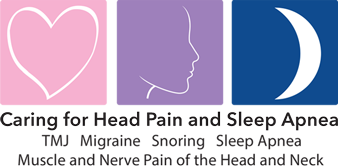
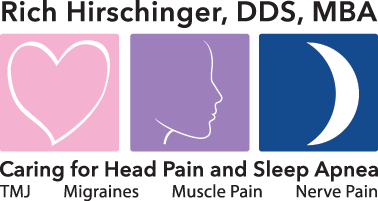
Diplomate American Board of Orofacial Pain
9615 Brighton Way, Suite 323
Beverly Hills, CA 90210
888.981.8981
Nighttime Appliance Therapy for TMJ Facial Pain and Bruxism
I am often asked how I decide between recommending dual flat plane appliances or a single full coverage mandibular (lower) appliance to my patients who suffer from facial and muscle pain and TMJ in my private practice in Beverly Hills or to the patients in the program at the UCLA Orofacial Pain and Dental Sleep Medicine residency, where I am a clinical supervisor on Wednesday's.
If a patient does not have an existing appliance, I look at the attrition, which are wear patterns, on the canines and/or the incisors, which are the front four teeth. If the patient has occlusal dysesthesia, takes an SSRI such as Prozac, Lexapro, Paxil, Zoloft, or if there is excessive wear from bruxism, which is a habitual grinding of teeth usually done during sleep, I know the better long term solution will be dual flat plane appliances since their teeth will abuse a single appliance because teeth and/or porcelain crowns are much harder than any nighttime appliance. Since dual flat plane appliances are flat, they do not wear out. If a patient has an existing appliance, if I see holes, cracks, or extreme wear patterns, I know the better long term solution will be dual flat plane appliances. Dual flat plane appliances are also a better long term choice for younger patients who have recently finished orthodontics since the appliances act as retainers, which eliminates the need for removal or fixed retainers. Dual flat plane appliances can also help reduce and possibly eliminate a clicking jaw joint(s).
Regarding the choice of making a single maxillary (upper) or mandibular (lower) appliance, research shows there is not much efficacy difference between the two. Having said that with all things being equal, the mandibular is smaller, does not take up the tongue space, and does not take up the airway space and is, therefore, more comfortable. However, one must consider the opposing dentition. If there are unopposed maxillary teeth then a maxillary appliance will help prevent
This patient had a very loud eary click when opening. The temporomandibular disc was displaced anteriorly on both joints and when he opened the discs would click into place. Three tongue blades were placed on his back teeth and then I had him open and close from that position, which eliminated the click. Dual flat plane appliances were made to that vertical height. This was the appointment where he received the appliances and you can hear that it eliminated the clicking. These appliances are only worn at night and they are not designed to change the bite. There is always a chance the clicking can be eliminated if this treatment is started within a short period of time of the onset of the clicking.
Learn about the N-rest and daytime stretching with the gentle jaw.
How can I tell if I clench and/or grind my teeth?
Some people clench, some people grind, and some people clench and grind. You can tell if you are a clencher by looking at your tongue to see if you see ridges on the sides of your tongue. All of these people have a "scalloped tongue," which is indicative of clenching.
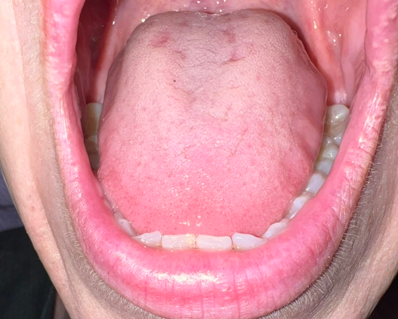 |
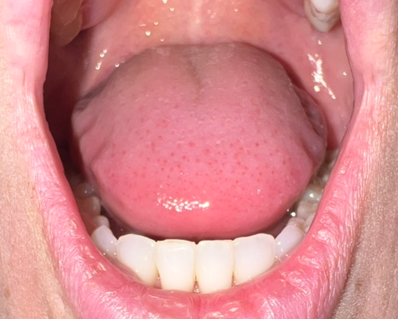 |
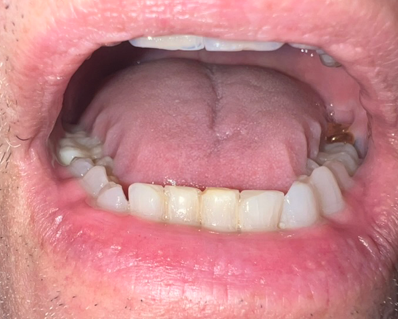 |
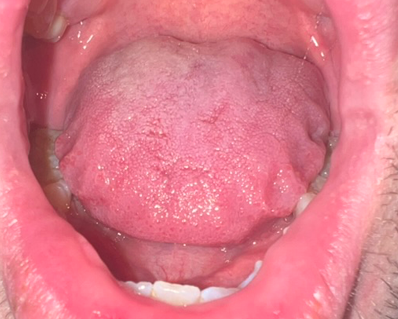 |
You can tell if you grind your teeth by looking at your canine teeth, which are typically pointing, which is why they are called canines.
This person does not grind since their canines are sharp.
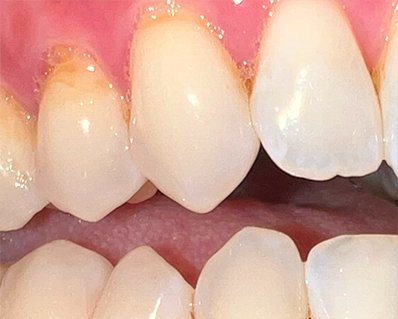 |
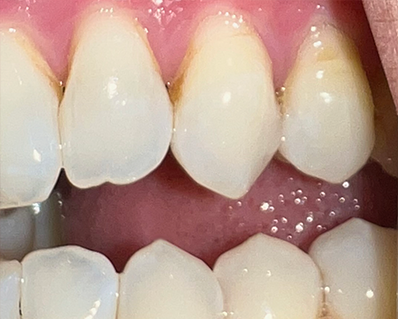 |
These people do grind their teeth. Notice how flat the canine teeth are.
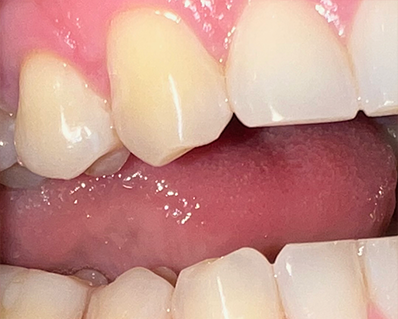 |
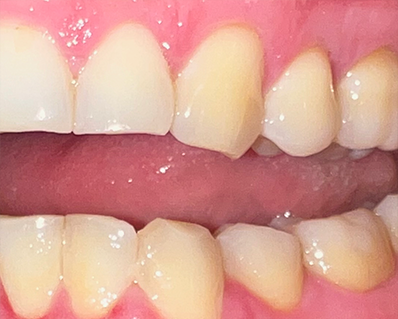 |
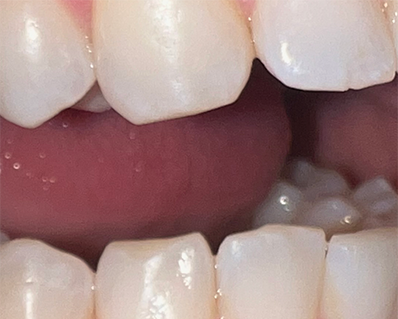 |
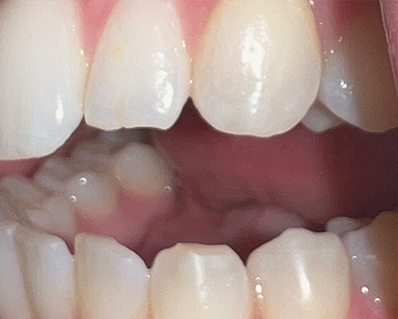 |
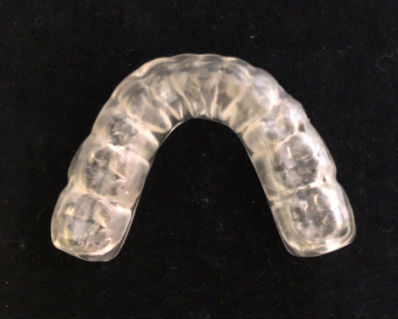 |
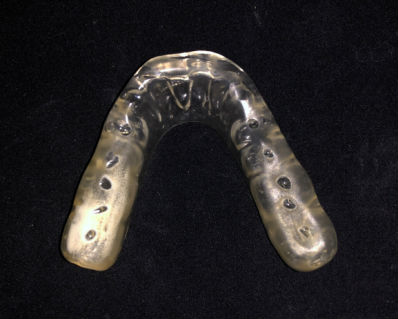 |
| This is a hard full coverage mandibular appliance that is a few years old. It is holding up well and it does not show any severe wear patterns. A single appliance for this patient is sufficient. | This single appliance is several years old and is very well balanced. You do not see any lateral (side to side) wear and the patient is happy with the appliance so it should continue to serve her well for many more years. |
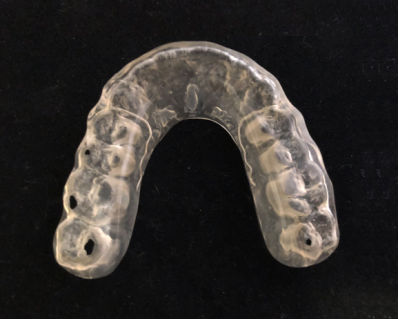 |
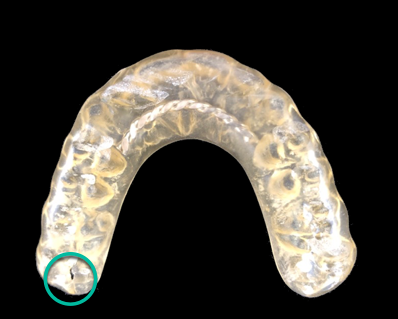 |
|
Whenever I see holes in a patient's existing appliance, I usually recommend dual flat plane appliances since they do not wear out. Additionally, you need to consider what is opposing the appliance. If the patient has a lot of porcelain restorations, then dual flat plane appliances will hold up much better because porcelain is much harder than teeth so a single appliance will not hold up very long. |
When I see a cracked appliance, which you can see in the lower left inside the circle, I recommend dual flat plane appliances. If you look very closely, you can see several white marks. These |
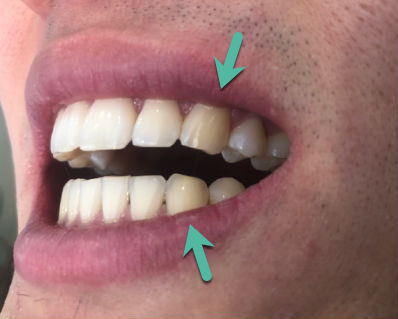 |
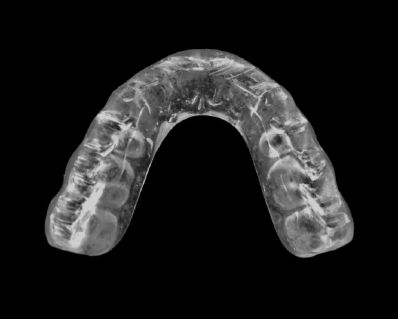 |
| This is a 24-year-old dental student. For his age has severe wear on his maxillary and mandibular canines, which are the teeth indicated by the green arrows. Notice how flat the teeth are. When he moves his jaw side-to-side, the tips of these teeth touch and without an appliance would continue to shorten. Dual flat plane appliances would be a much better long term recommendation for him than a single appliance. | This was the existing appliance that the 24-year-old dental student presented with. You can see what he has done to this appliance when you look at the lateral wear on the posterior and anterior aspects of the appliance. I made him dual flat plane appliances and there are no visible wear patterns on the new appliances and his pain is reduced. Having said that, the new appliances are only a few months old and he was never previously advised to stretch, which he is now doing several times a day. |
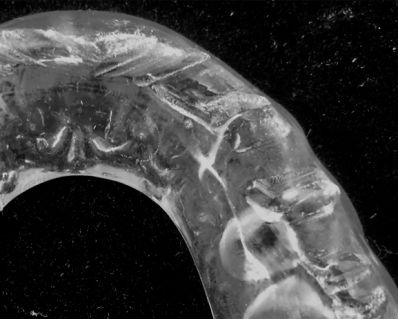 |
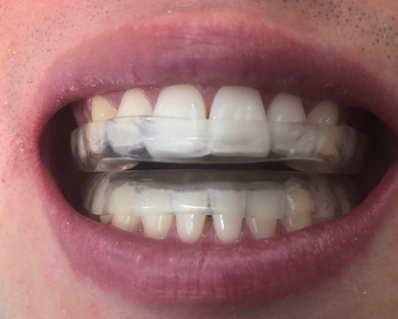 |
| This is a close up of the appliance the 24-year-old dental student presented with. This would have had holes in a year or two based on how "well" he was beating it up. |
This is the dual flat plane he now wears. He reports it is very comfortable and since there is no tooth-to-tooth contact he cannot wear it out. |
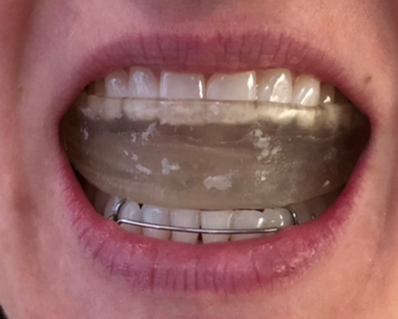 |
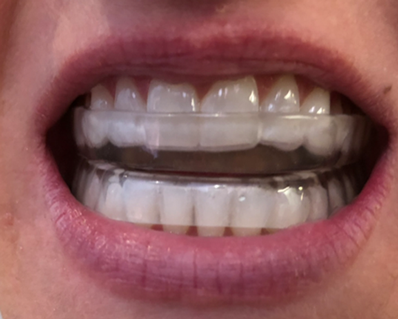 |
| Yes, this hockey puck...I mean appliance was what a patient presented to my office with. It was fabricated by an orthodontist since the patient was complaining about sore jaws. No...it did not help her. |
These are the dual flat plane appliances I made for her. The lower eliminates the need for a mandibular retainer, and she can easily create a comfortable lip seal. |
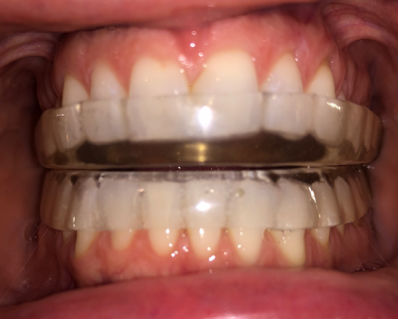 |
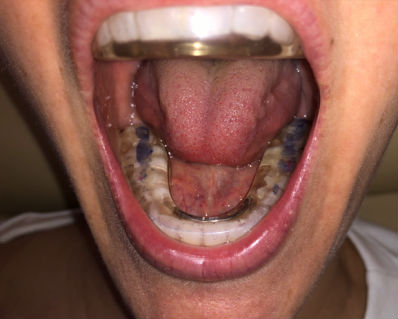 |
| The "occlusion" on the dual flat plane is flat. There is no guidance. They are like hockey rinks. Flat. When I deliver these, a full arch articulating paper is inserted and the patient is instructed to slide left to right and front to back. They are never instructed to "tap." |
The contacts are broad and bilateral, which you can see from the blue marks on the lower appliance. I'm not concerned about seeing contacts the anterior aspect of the appliances. The DFP's rarely need adjusting because there is no tooth contact on them and they do not wear out. |
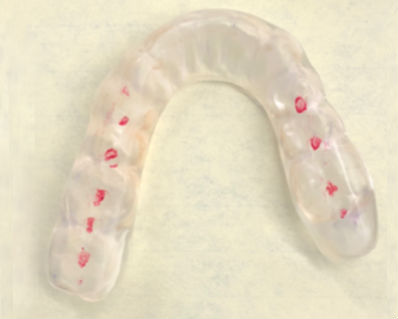 |
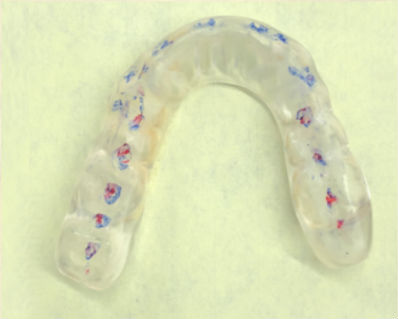 |
| Here is the occlusal scheme I aim for with a single appliance. Contacts are right down "Broadway," with no occlusion on the buccal of the appliance. |
This is the lateral scheme I aim for. The appliance is still almost flat. To be fair, this is not great but it is likely good enough. There is a lateral interference on the buccal of #20 and the cusp tips could be shallower on the left posterior teeth. |
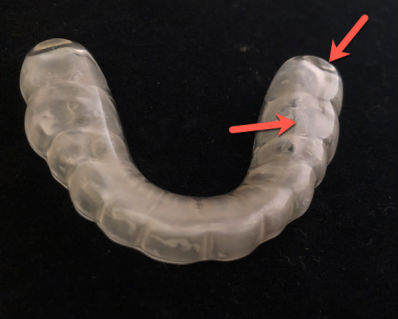 |
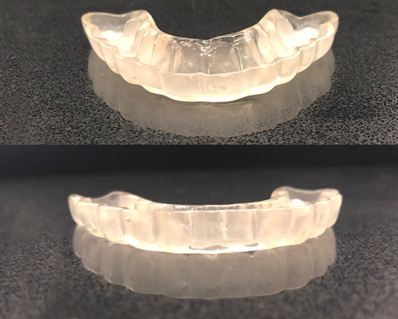 |
| This is the upper of a dual flat plane appliance. The arrows indicate how truly "flat" the appliances are. The bottom is just as flat. |
These are upper and lower dual flat plane appliances resting on a granite countertop. They do not rock since they are flat and you cannot see any gaps between the appliances and the granite. |
Learn about the muscle referral patterns of the jaw closing muscles.
Learn about the muscle referral patterns of the muscles that refer pain into the TMJ.
Learn about Botox treatment for TMJ and TMD.






